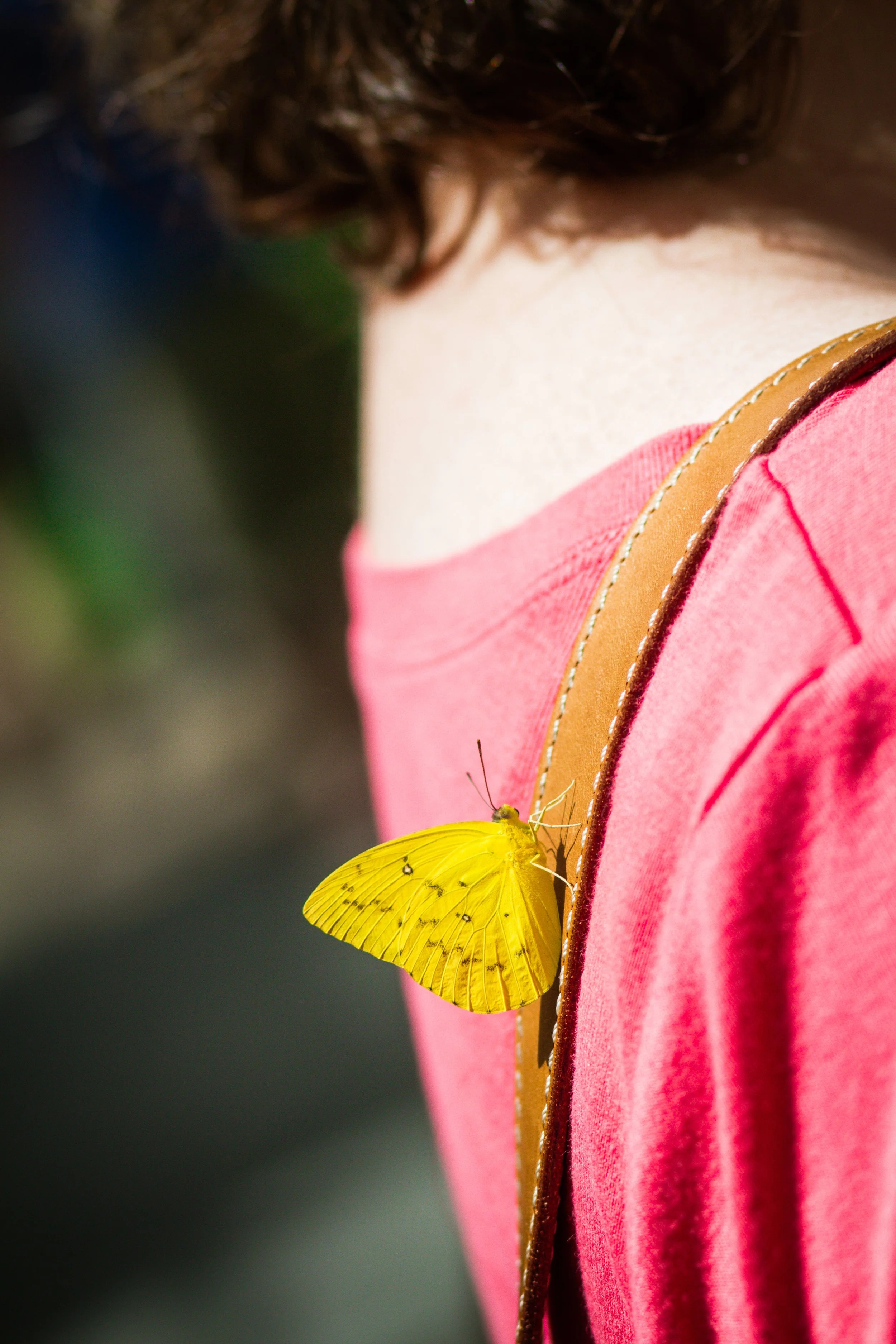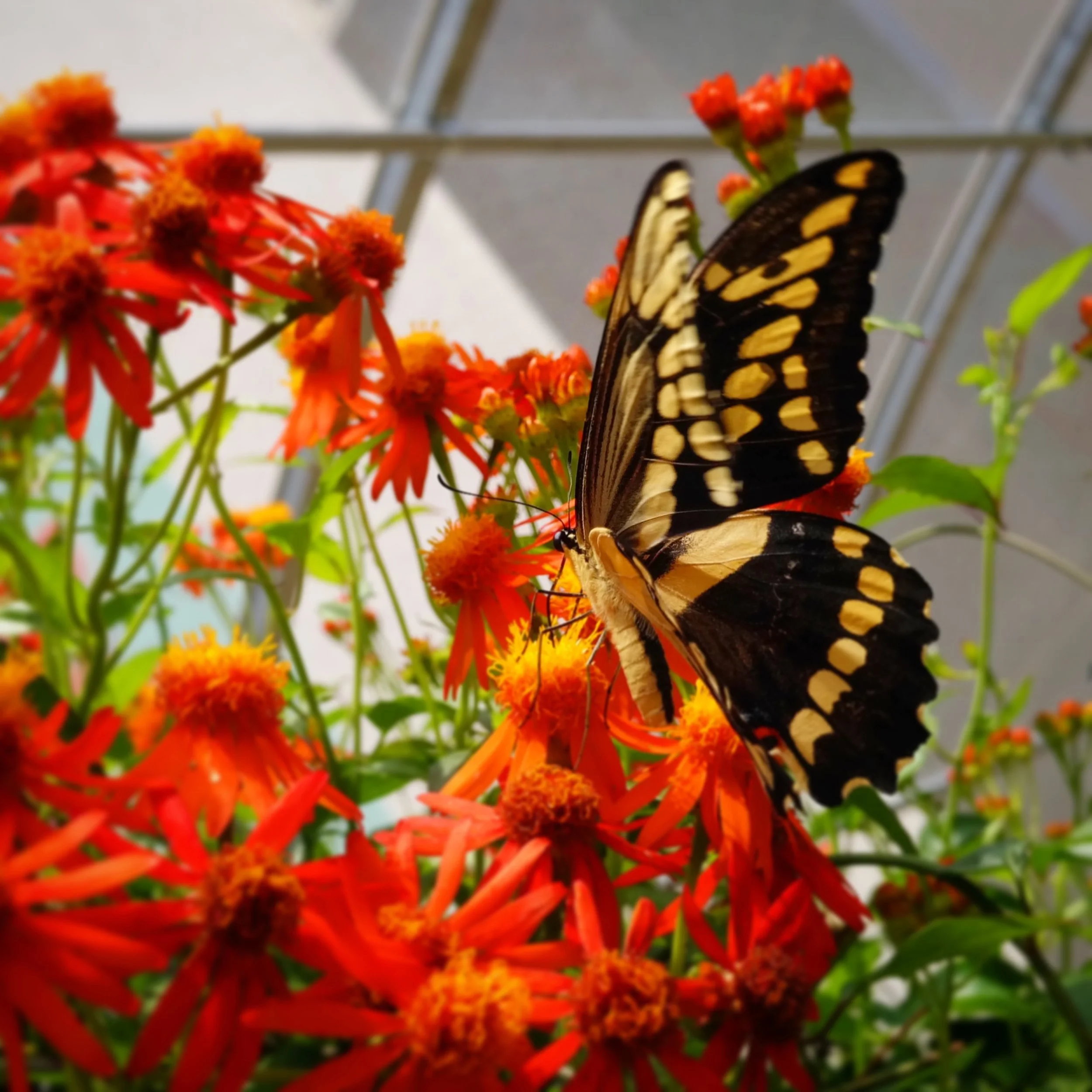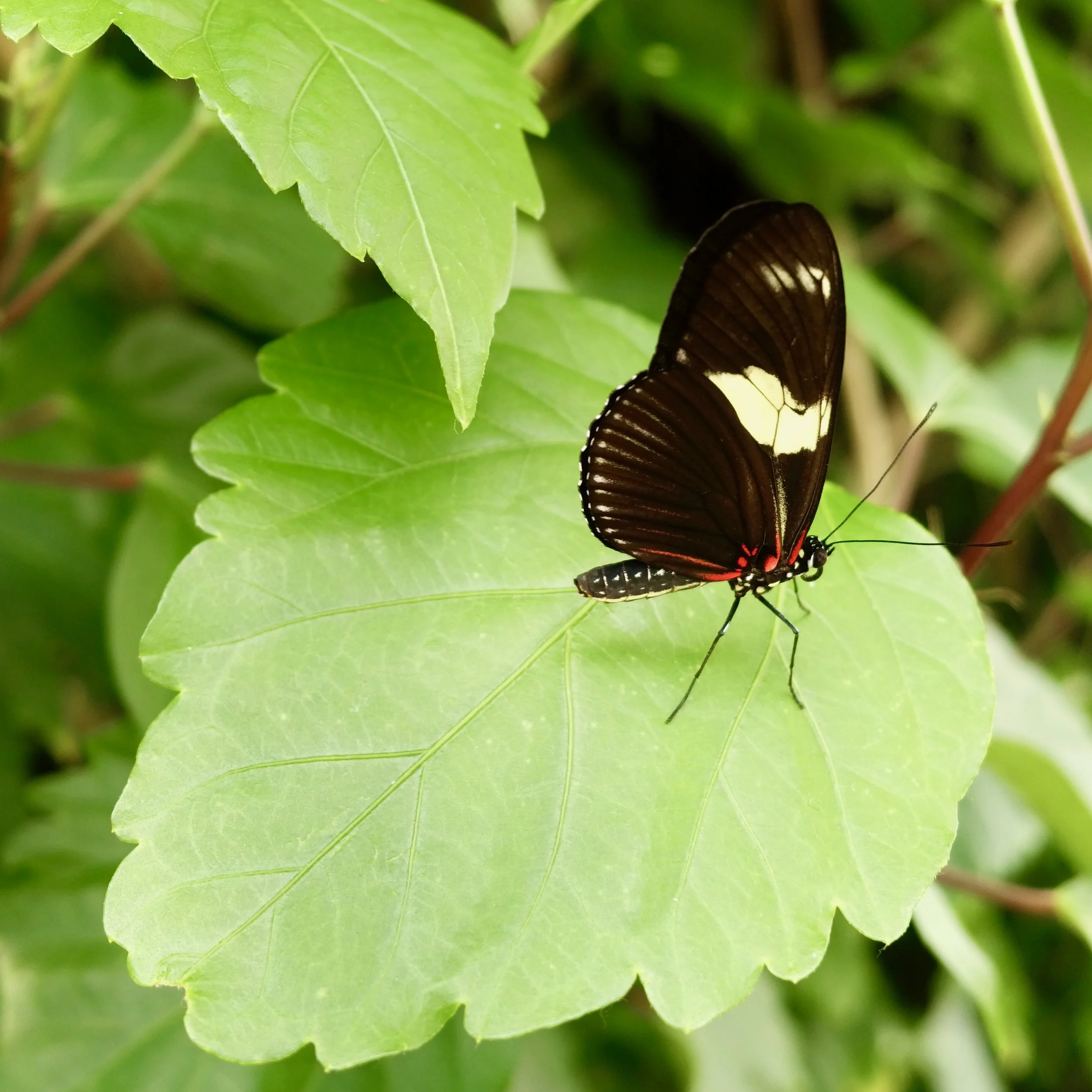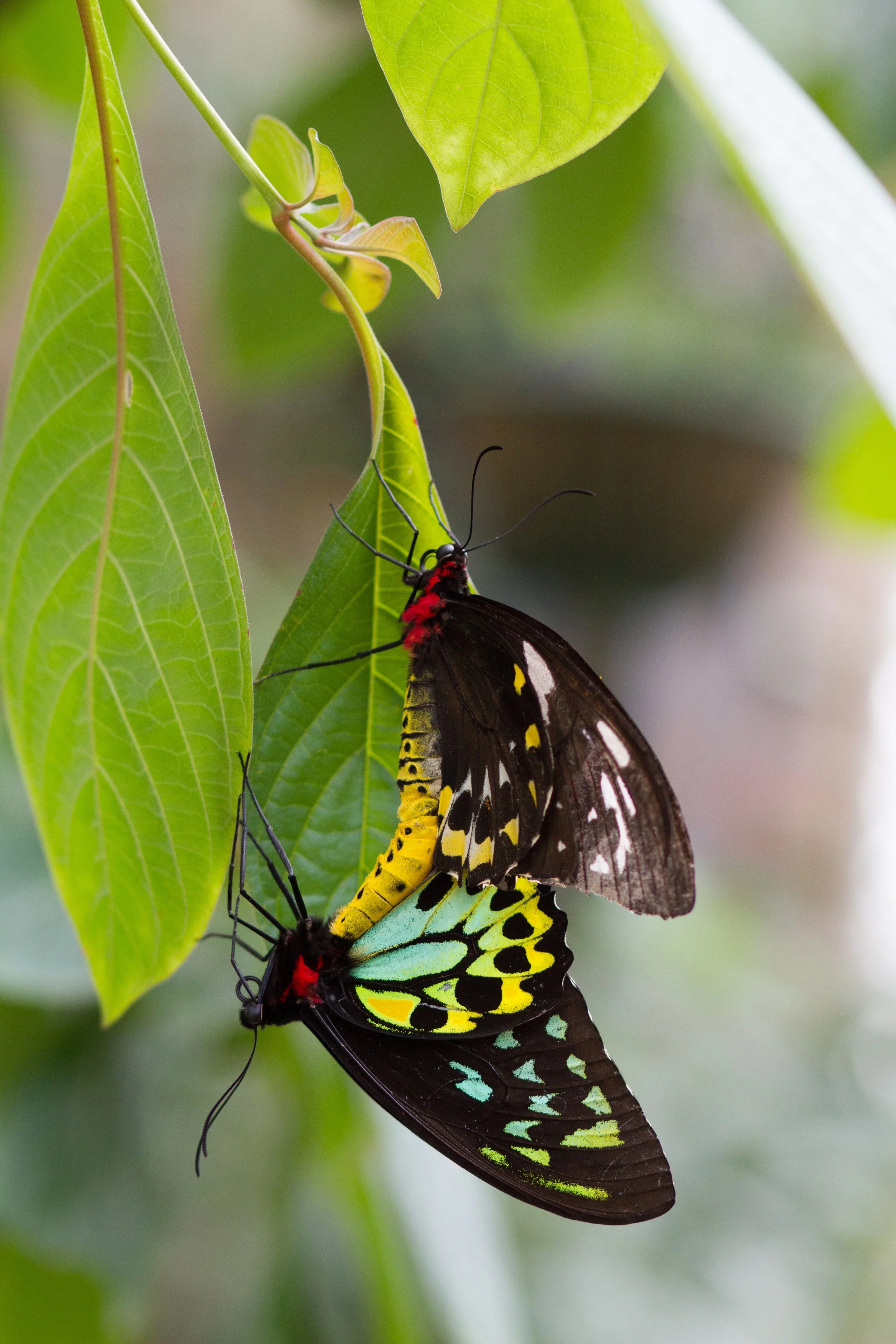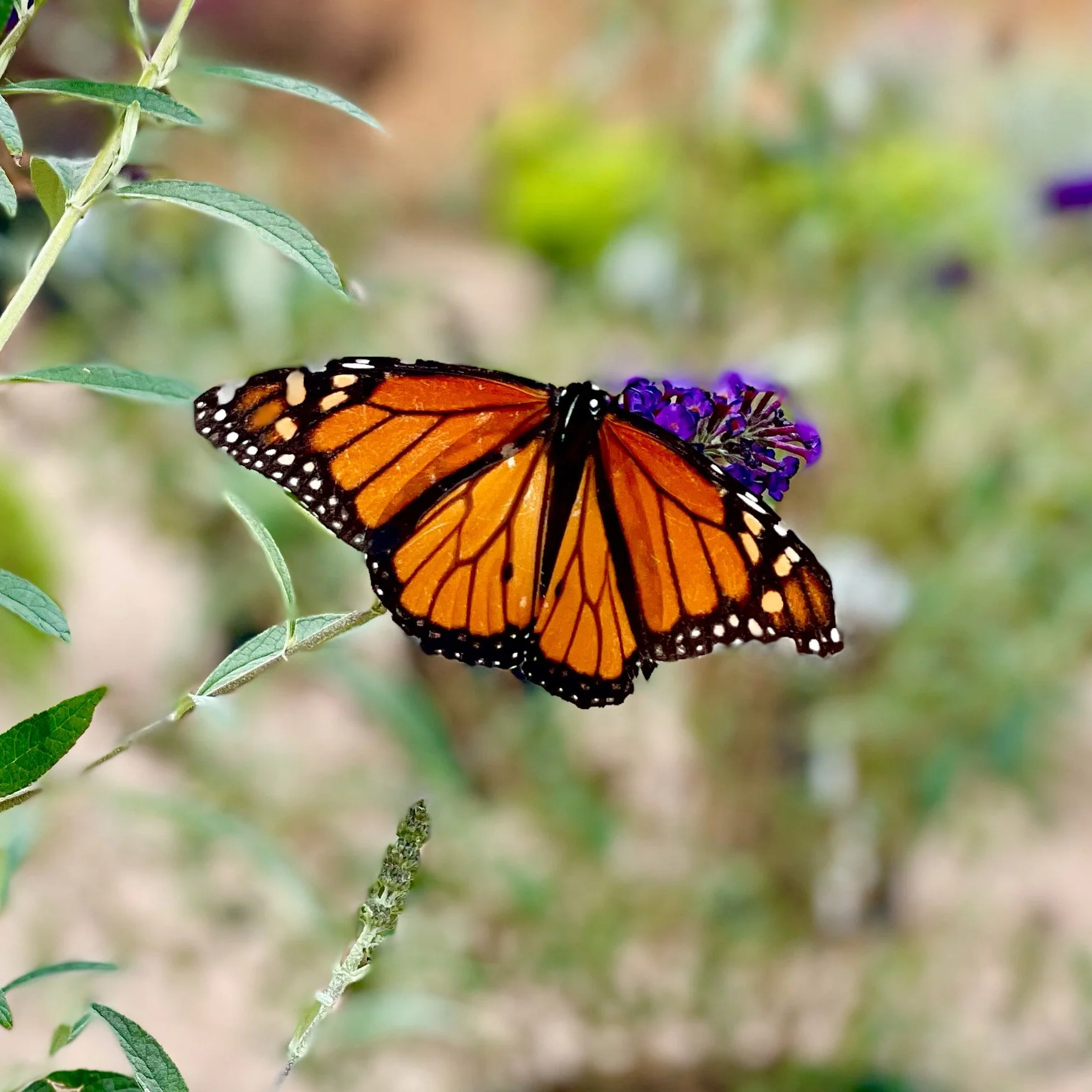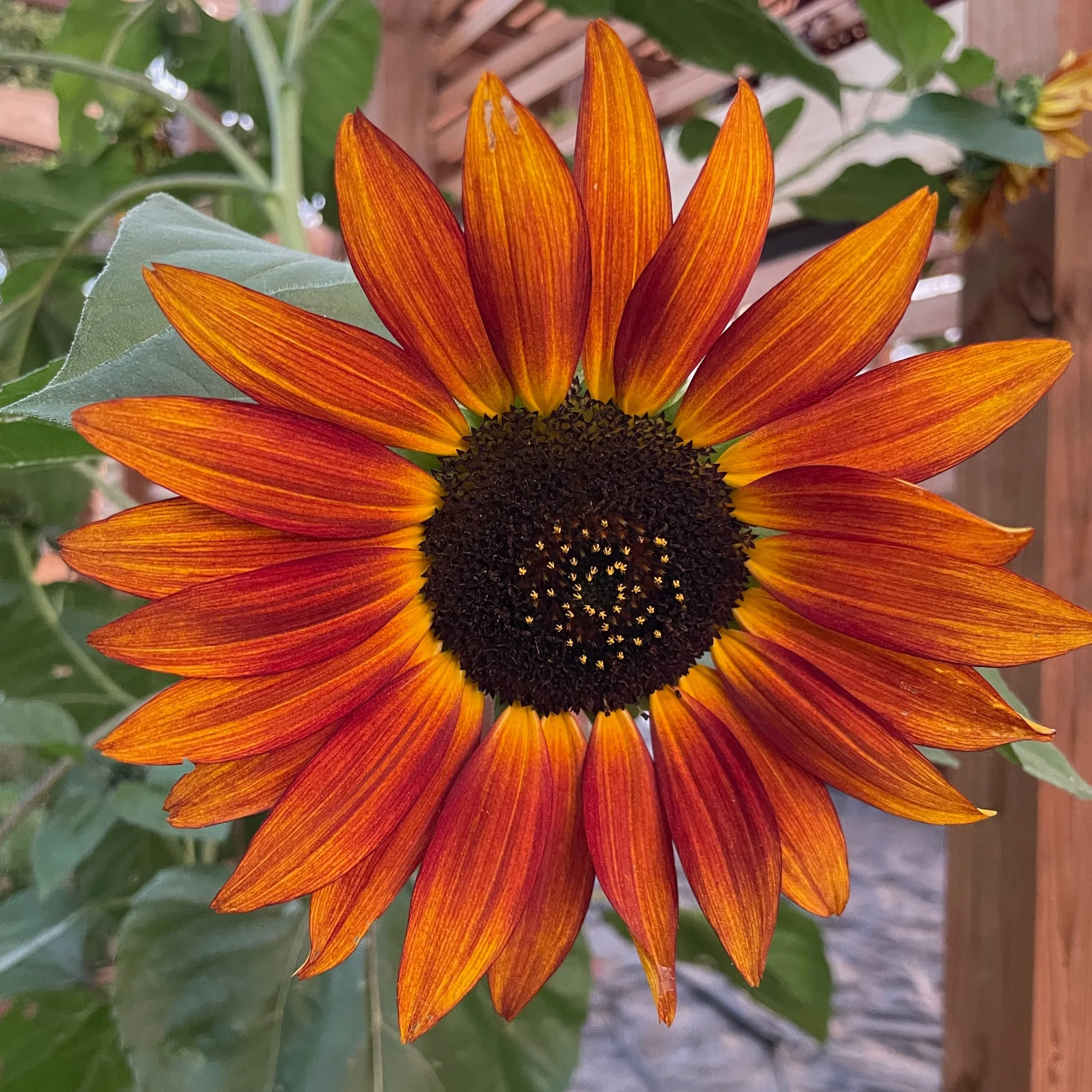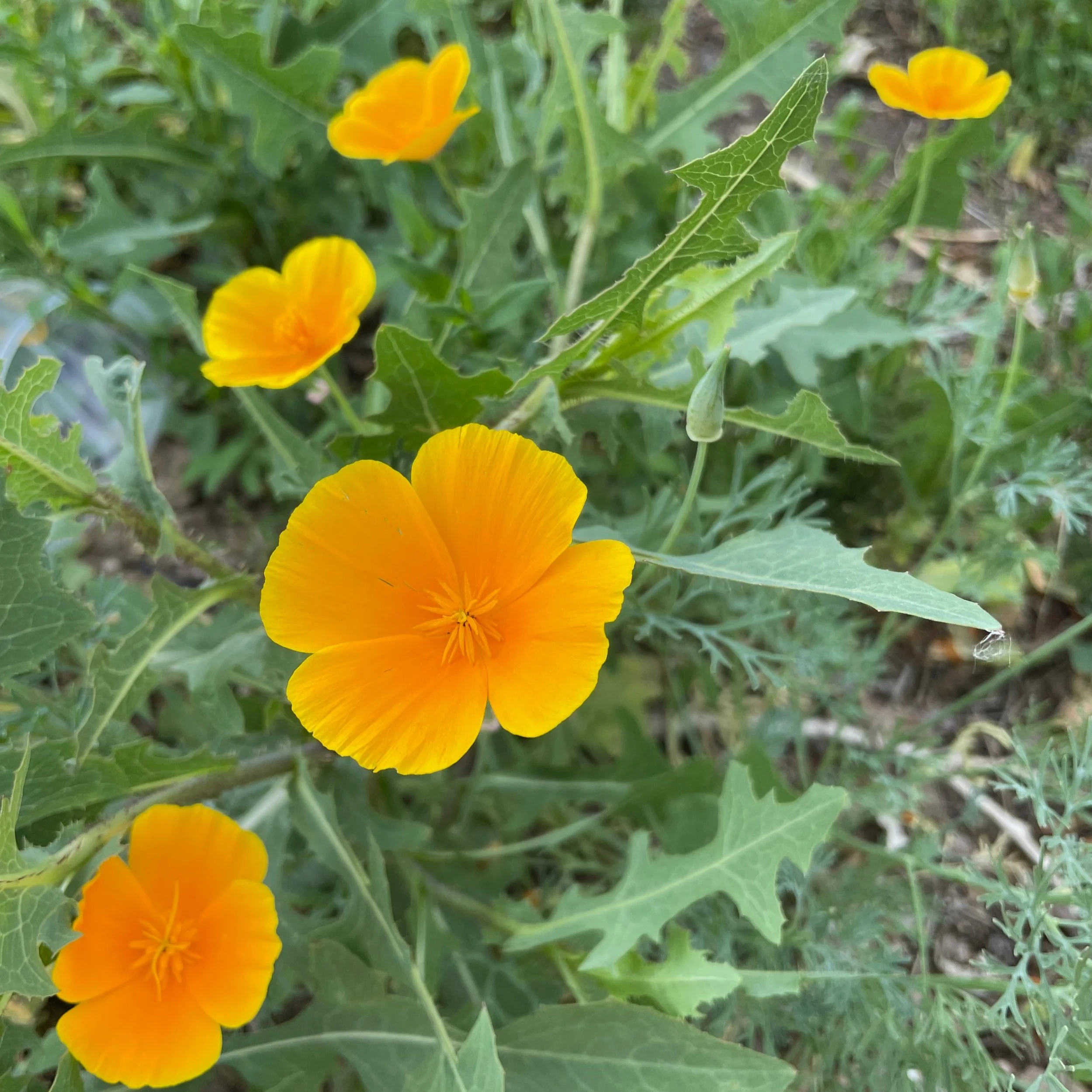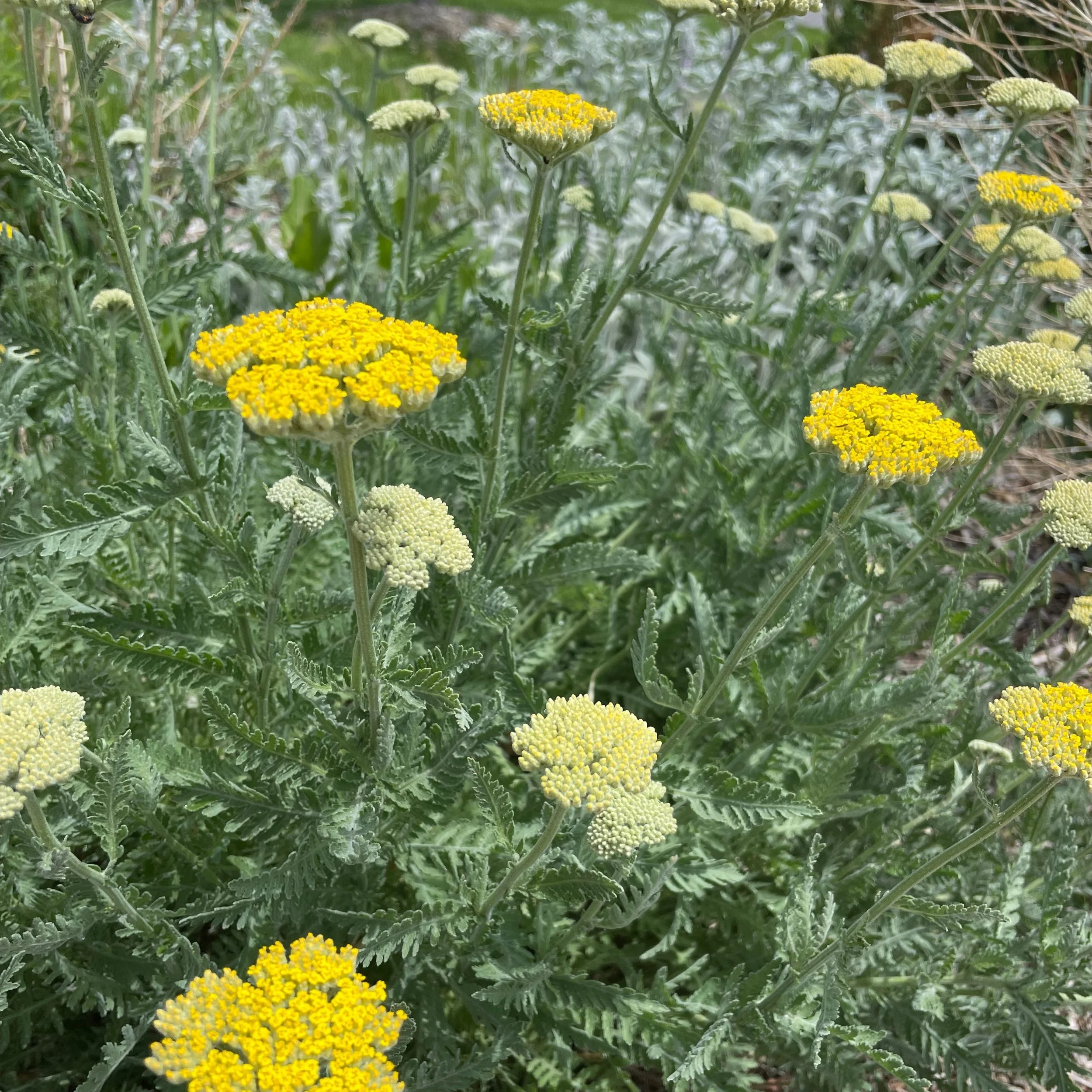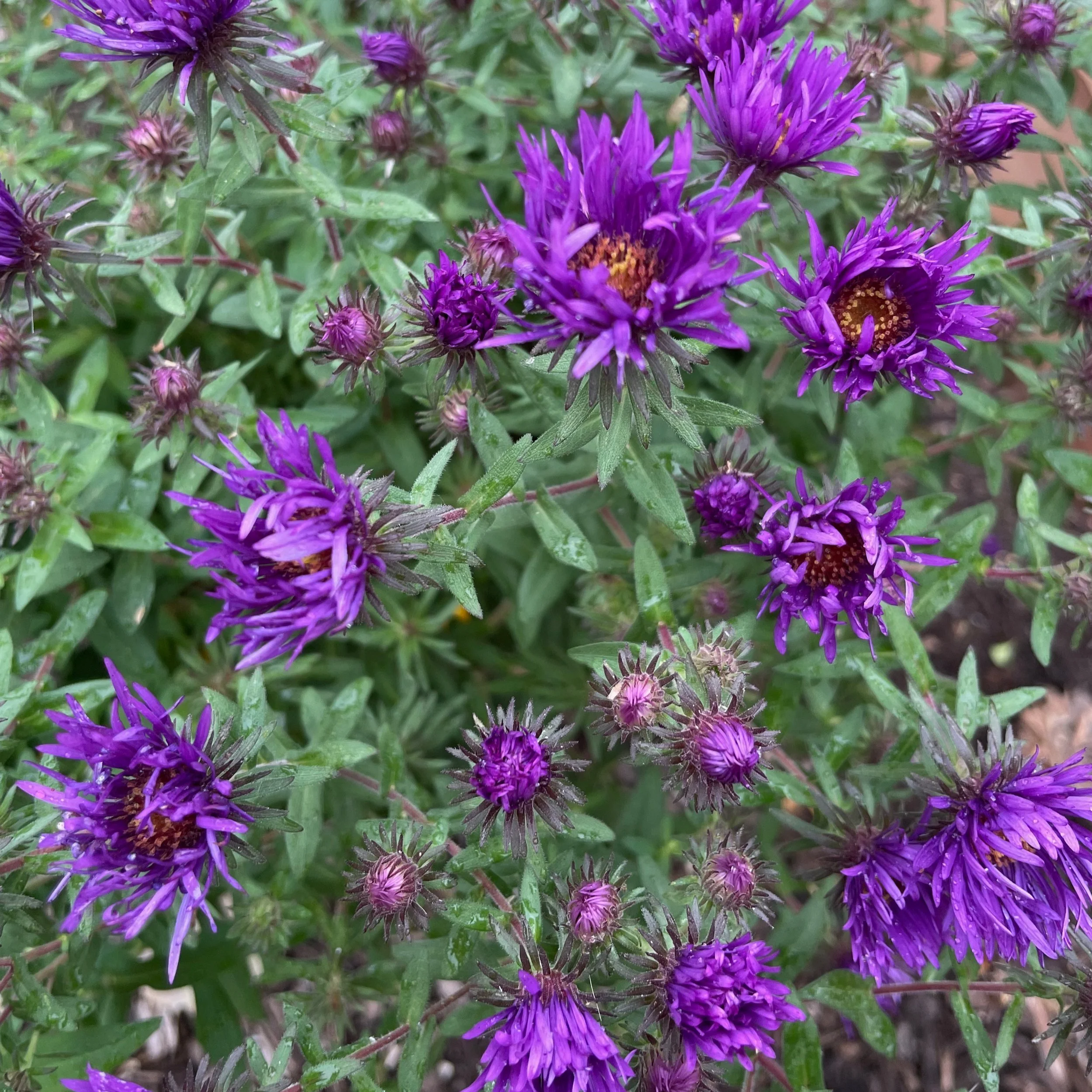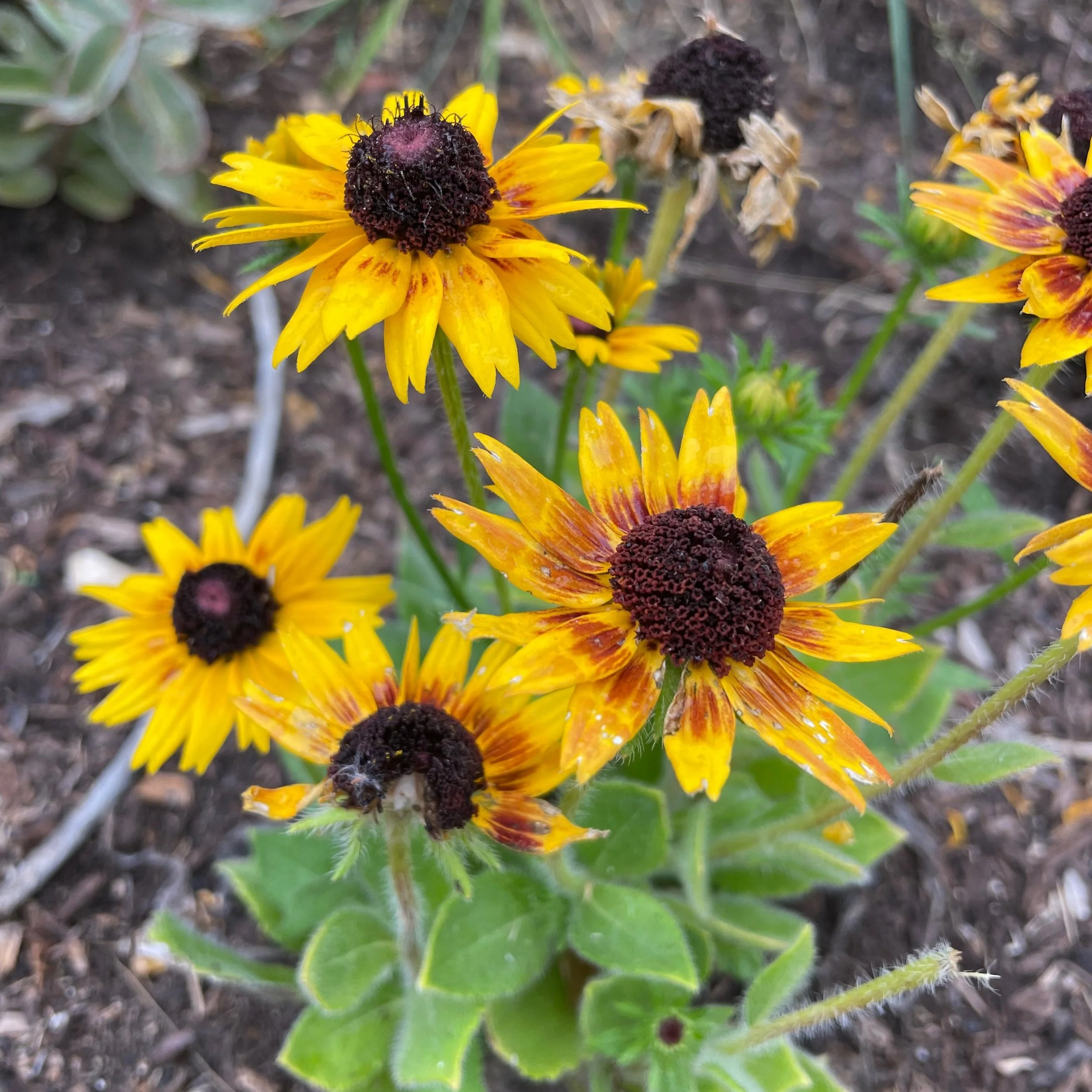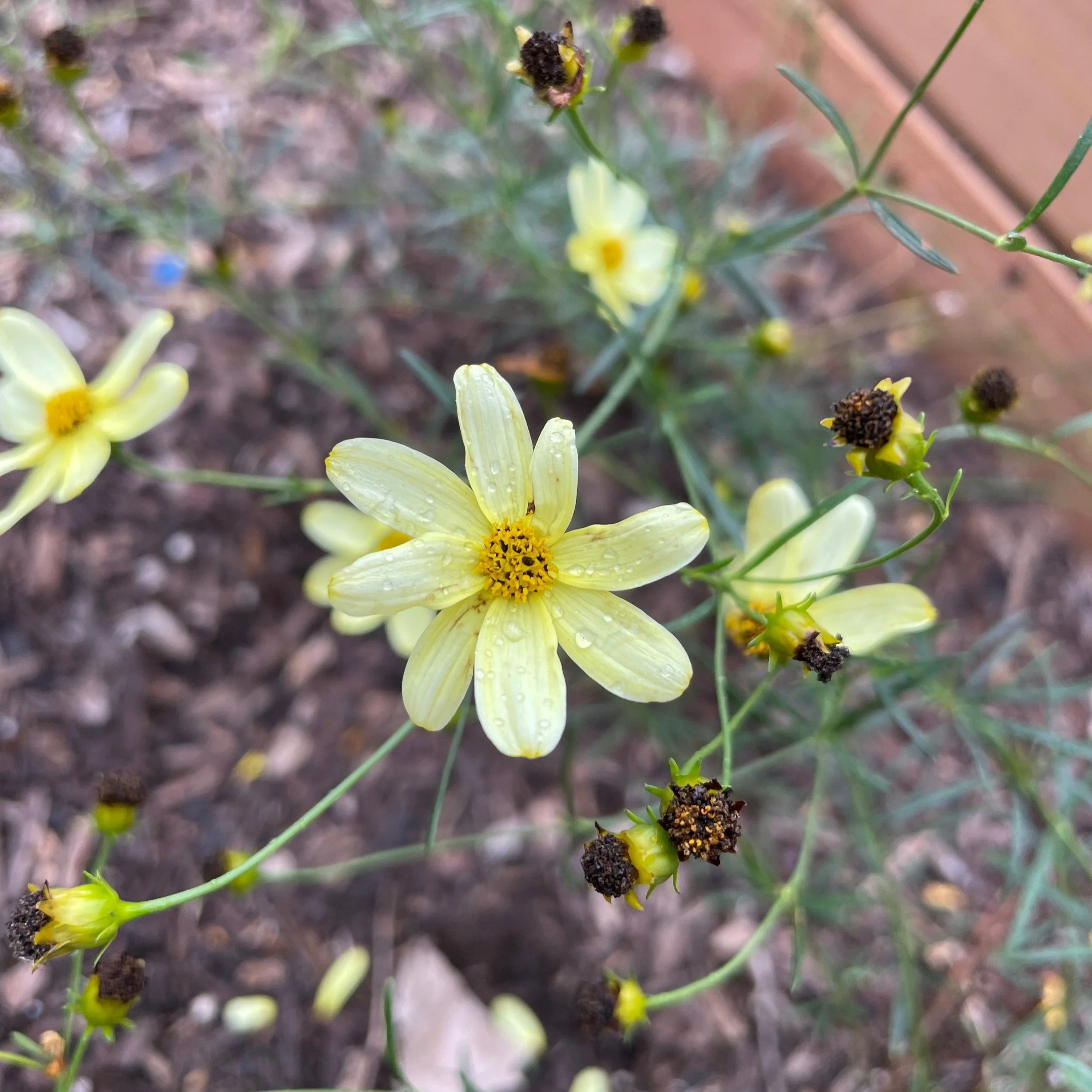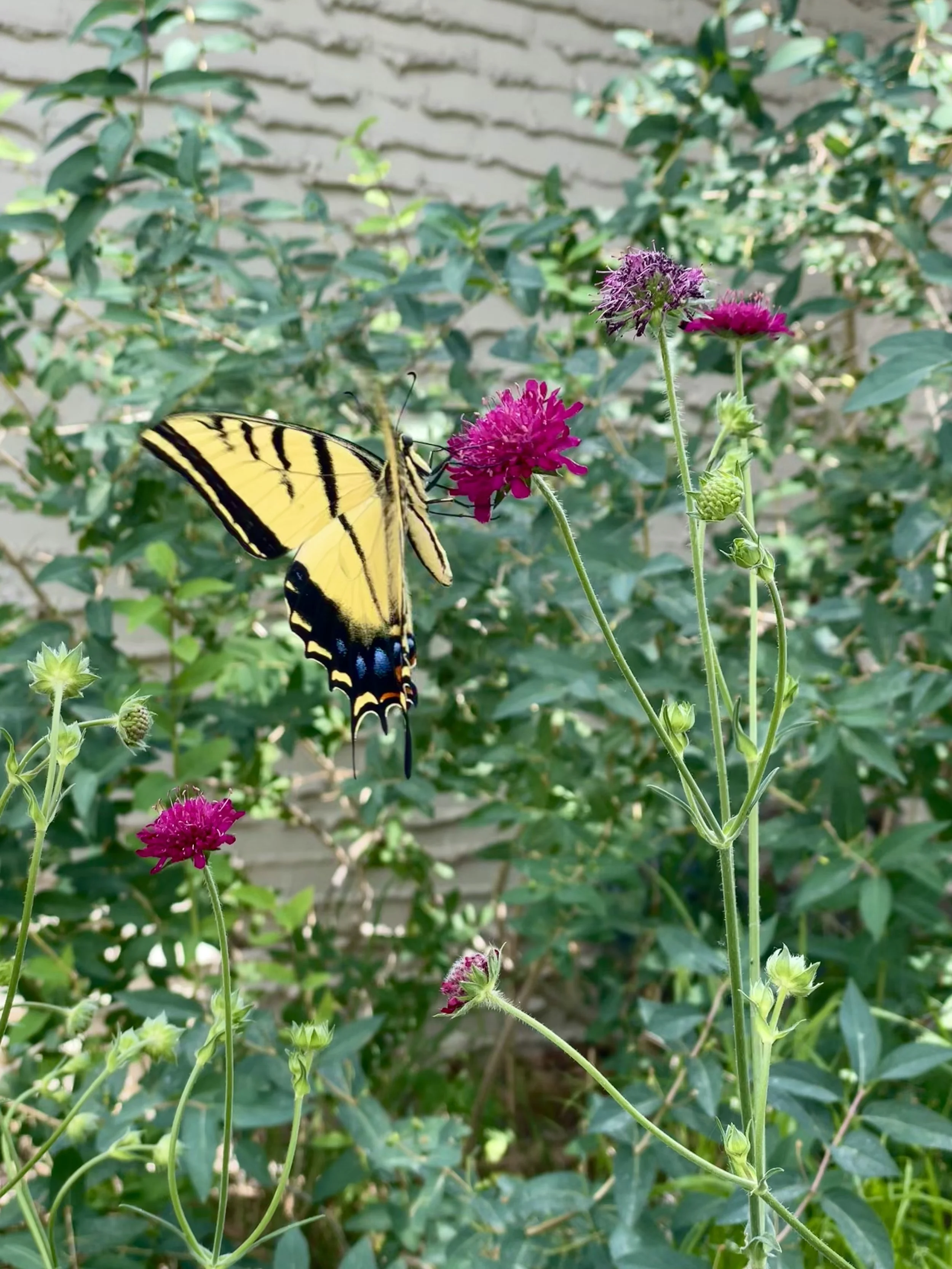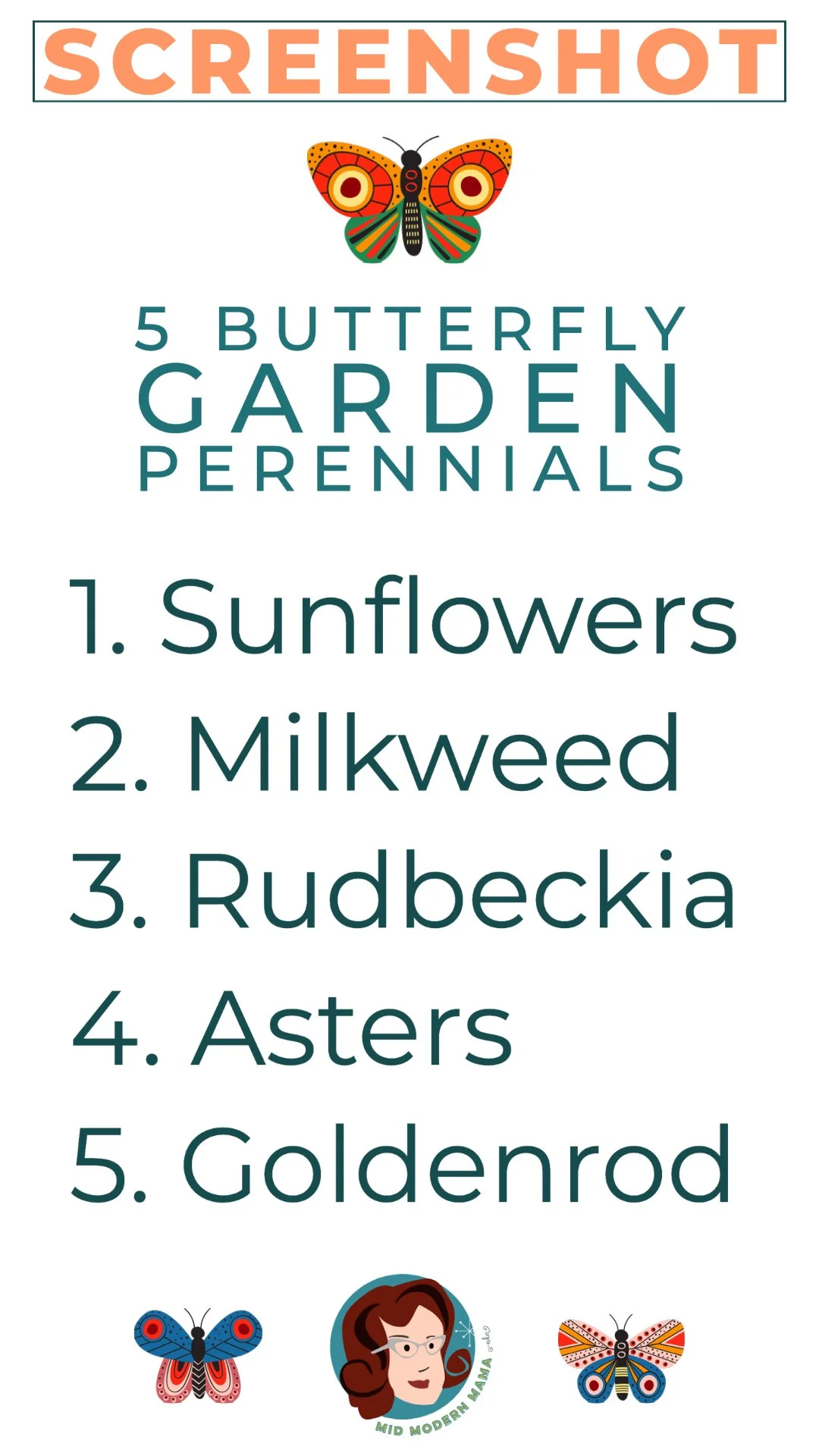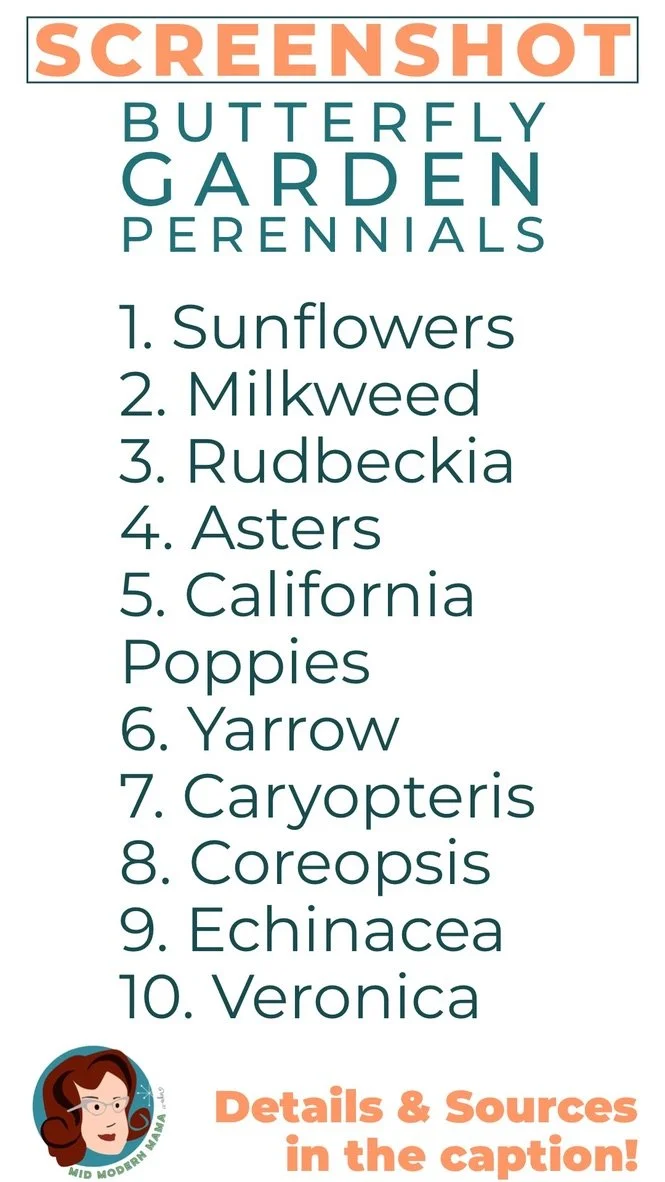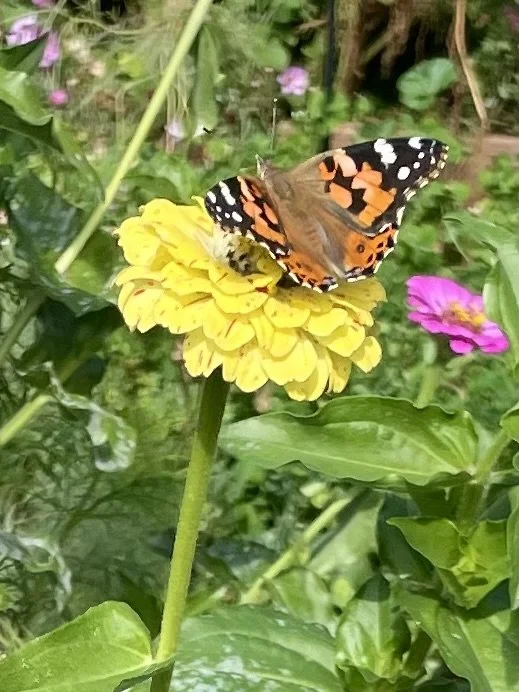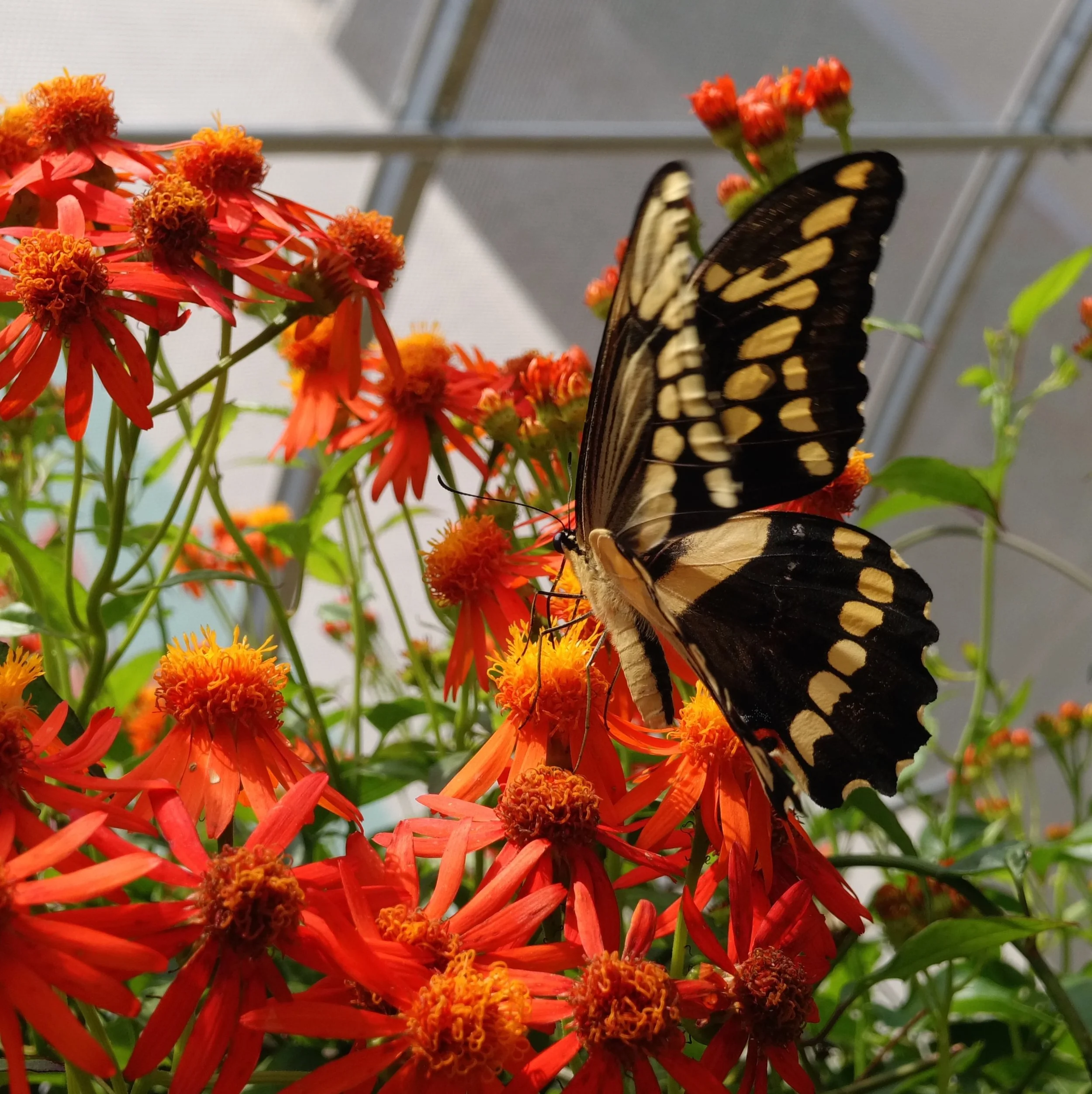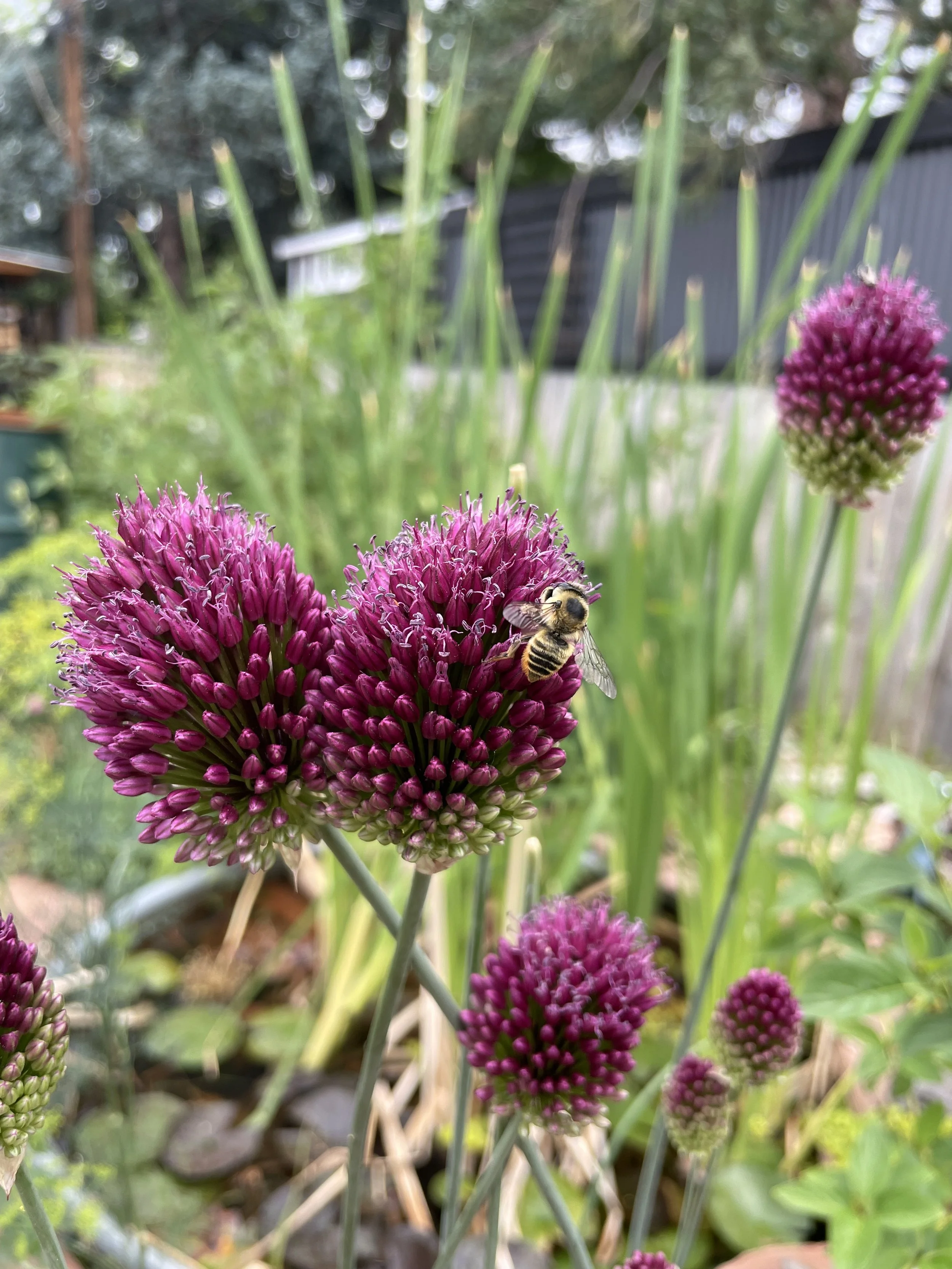How to Create a Butterfly Garden
Plant a Garden that Butterflies, Bees, Moths, & other Pollinators Love
When the Monarch Butterfly was added to the Endangered Species list, many people were incredulous. But the fact is, if you’ve been listening, ecologists and particularly entemologists have been sounding the alarm for decades: biodiversity is in trouble in North America, and our insect populations are in crisis. Yep. That means bugs. We need bugs. Bugs are foundational to the biodiversity of our planet, and if they are in trouble, so are all other species.
The fact is: the typical North American yard does not support much in the way of biodiversity. Those vast expanses of grass treated with pesticides and herbicides are monocultures — they don’t support a rich diversity of life. BUT our gardens and lawns represent a unique opportunity to DO SOMETHING substantial. If we change HOW we garden — and who we are gardening for, we can not only help protect insect species, but also other species, too.
As a Colorado Master Gardener, I’m interested in the science behind gardening. And I’ve been following the work of Dr. Doug Tallamy, entemologist of the University of Delaware, for some time. He has started something called the Homegrown National Park movement — the foundational idea being that we can stop the accelerating species loss by gardening differently. We have to garden to nuture insect life rather than to eliminate it. And in doing so, we will then support other species along the way.
Source: homegrownnationalpark.org and Dr. Doug Tallamy
For many gardeners, this is a big shift. To garden for and with nature — rather than to make a garden beautiful — can mark a big change in our approach. But here’s a small and easy step: dedicate an area in your yard to pollinators. Make that your first step. It’s not hard. It’s actually not expensive. And it’s some of the easiest gardening you’ll do — once established, these plants need very little care in most of North America.
So, here’s everything you need to plant a pollinator or butterfly garden!
What types of plants attract butterflies?
Butterflies are attracted to plants that provide nectar and those that host caterpillars. North America is a huge continent! The butterfly species in Maine differ greatly from those in Florida or Colorado or Southern California, for example. However, they rely on similar plants and native North American plant species. Consider adding a variety of flowers such as milkweed and echinacea as well as plants like dill and fennel for caterpillars.
There are two really important things to remember when planning for pollinators:
You need to provide plants that are food for caterpillars — and they will be eating!
You need to provide blooms that provide food for butterflies, native bees, moths, and other pollinators.
Those plants are often the same ones — but not always!
The Xerces Society, which is dedicated to the support for and preservation of invertebrate species like butterflies, moths, and other pollinators, has developed an amazing tool with plant lists by region.
Click on this link: The Xerces Society Pollinator Conservation Resource Center
Click on your Region.
Click on Plant Lists and scroll down to select one which is appropriate for your location and goals. There are plant lists specific for Monarch Butterflies, which will also benefit other pollinators, but then there are also lists for specific areas that target native insect populations in general.
Print out the PDFs and start to build your plant list using those species.
Where do You Get Plants for a Butterfly Garden?
I started with the Butterfly Paradise Pre-Planned Garden from High Country Gardens. I love pre-planned gardens as a starting point. Look for collections that are designed for your zone and location. Here on the Front Range in Colorado, we are lucky to also have Resource Central’s Garden-in-a-Box program. Their plants are chosen to be water-wise as well as supportive of local biodiversity. No matter where it comes from, with a pre-planned garden you get a collection of plants chosen to work together aesthetically with similar water and light needs as well.
I supplemented the pre-planned garden with plants from my local nursery as well as others started from seed. If you have the room, almost all of these plants can be started from seed. Sunflowers and California Poppies are particularly easy to start this way and can be planted directly into prepared ground.
Over the coming years, I’ll add more beds and more native species to fill out the area. It is a long-term project, but the results are pretty amazing in a short period of time!
UPDATE: Check out The Wildlife Garden — an even bigger pollinator paradise that I started to plant out last year. It is amazeballs! And I have a full plant list available for you to download and use, too!
Top Plants
for your Pollinator Garden
A pollinator garden needs plants which support every stage of a butterfly’s life. That means eggs, caterpillars, chrysalis, and butterflies. Some butterflies need different plants for different parts of their lifecycles. Others are only choosy for one phase and are more flexible at other phases. Building your pollinator garden on native plant species will ensure that you are supporting multiple phases of a bug’s life. You may see caterpillars munching on your leaves, but remember: those caterpillars are future butterflies or moths. We gardeners have to be willing to lose some vegetation in order to enjoy the beautiful moths and butterflies later!
I started with 5 keystone species to start my butterfly garden:
Sunflowers
Milkweed
Rudbeckia
Asters
Goldenrod
These species all support native pollinators and are North American natives. To these I added some other natives and non-natives — all loved by insects at various developmental stages:
California Poppies
Yarrow
Coreopsis (Tickseed)
Echinacea
Veronica americana
Caryopteris
Sedum
Little Bluestem Grasses
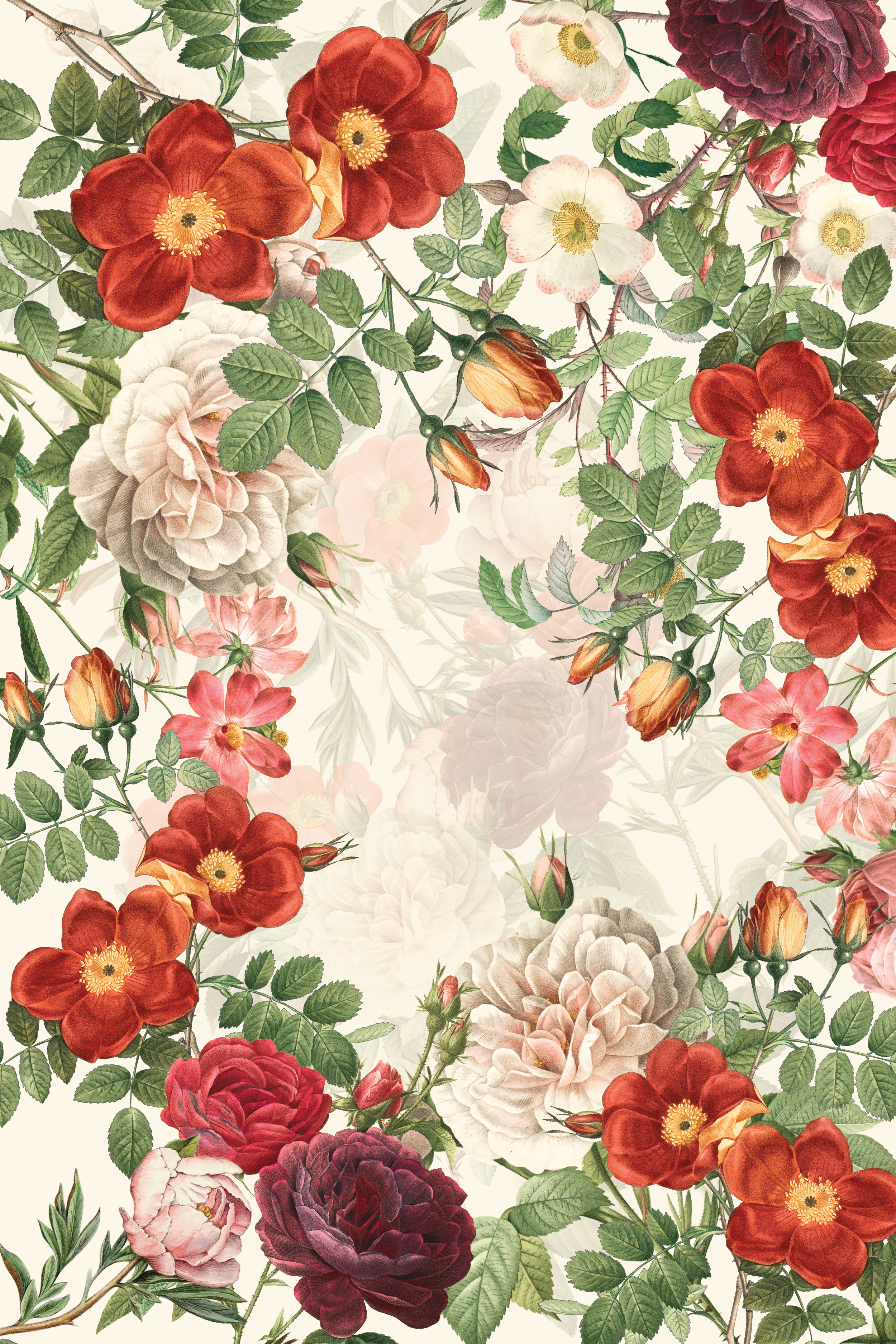
Butterfly & Pollinator Garden FAQs
Why should I create a butterfly garden?
A butterfly garden provides essential food, shelter, and breeding grounds for butterflies. It's a great way to support local ecosystems, promote biodiversity, and enjoy the beauty of butterflies in your backyard. The butterfly populations in North American (and globally) are threatened due in large part to a loss of habitat, so providing habitat for butterflies is critical in the fight against species loss.
Butterflies have evolved to need specific types of plants — to feed their larvae, to drink their nectar, and to lay their eggs upon. Without those plants, they can not live out their lifecycles, so planning a butterfly garden with that in mind — not just beautiful flowers, but the RIGHT plants for specific species of butterflies — will positively impact their species survival.
When is the best time to plant a butterfly garden?
The answer to this may surprise you: any time except summer! Planting in spring or early summer when the weather is warm allows plants have time to establish themselves before the colder months. But, planting young plants in the fall when the soil is warm is even better in some climates. Just don’t plant in July or August when the heat can really stress young plants.
Do I need a specific type of soil for my butterfly garden?
Choose plants for the soil conditions you have. When I planted out my butterfly garden — and then the expanded Wildlife Garden — I chose plants that do well in clay soil as that’s what I have. I also amended the soil with a 3” layer of compost before planting. Most native plants don’t thrive in rich soil, so I won’t amend often, but our soil has been used and abused for decades, so it was important to give them a good start.
If you have never had a soil test, check with your local county extension office. Most offer a very reasonably-priced and reliable test kit.
How do I choose the right location for my butterfly garden?
Pick a sunny spot, as butterflies are attracted to warmth. Ensure the area gets at least 6 hours of direct sunlight per day and has shelter from strong winds, such as near a fence or a building. If you don’t have shelter already, consider adding some shrubs to block the prevailing winds a bit.
How do I attract both adult butterflies and caterpillars?
Plant a combination of nectar-rich flowers for adult butterflies and host plants (like milkweed or parsley) for caterpillars. Offering both ensures the complete lifecycle is supported. Choose flowers with umbellifer-shaped flowers — like dill and Achillea. These flat flowers offer places for delicate butterfly feet to land and have flowers of the proper shape for most butterfly mouth-parts to be able to sip from.
The biggest tip, however, is in numbers. Have multiple plants of each species. My rule of thumb is to have at least 3 plants of any species — and they are planted in close proximity — so if a pollinator likes that particular plant, there are multiple places to eat, drink, or lay eggs nearby allowing them to conserve energy.
What is eating all of my plants? How can I keep pests from damaging my pollinator garden?
Congratulations! Unless it is another insect like grasshoppers or Japanese beetles, you probably have caterpillars — the larvae of butterflies. These caterpillars are sometimes so well-camoflaged that the only sign of their arrival is foliage that has been eaten. But remember: THIS is the goal! If caterpillars are eating your plant leaves, they will pupate and become butterflies! Hooray!
There’s an adage to remember here: If nothing is eating your garden, your garden isn’t part of the ecosystem. Your goal in a butterfly garden is to supply food and habitat for the entire lifecycle of the pollinators in your ecosystem.
Assess the damage. If you see Japanese beetles or grasshoppers, you can hand-pick them in the early morning or late evening. Plunge them in a bucket of soapy water which will drown them and prevent their escape. Then compost them.
NEVER use pesticides, insecticidal soap, or Neem Oil in a pollinator garden. Nothing is insect-specific. You will kill off the inescts you are trying to encourage!
Are there any plants that are toxic to butterflies?
The plants themselves won’t be toxic, but if they have been treated with neonicotinoids or other pesticides, they may be. Avoid using plants that are treated with pesticides or chemicals that can harm both caterpillars and adult butterflies. Always opt for organic or non-toxic gardening practices — and if you are buying plants, purchase them from growers who don’t use pesticides or neonicotinoids.
Suggested sources:
How do I provide water for butterflies?
Create a shallow water source, such as a birdbath with stones or a small puddle, where butterflies can land and drink safely. Make sure the water is shallow enough to prevent drowning. I put out plant saucers filled with a layer of stones and then fill them each morning. The stones allow pollinators to land and drink without getting into the water.
Can I have a butterfly garden in a small space or container?
Absolutely! Even small spaces or container gardens can attract butterflies. Choose plants like Echinacea or Achillea, and place them in sunny spots with enough room for each plant to grow. Consult the same plant lists to assist with your planting choices. Most native plants will do well in pots as long as the pots are big enough. Protect them during the winter, and they can last for years!
How long does it take for a butterfly garden to thrive?
That depends on the conditions around you. If you live in an area with few native butterflies, it could take a few growing seasons for them to find you. But don’t give up! Your plants need a few years to get established as most pollinator garden plants are perennials. The rule for most native North American plants is:
Year One: they sleep.
Year Two: they creep.
Year Three: they LEAP!
So, realistically, you can start to see progress over a 3-4 year period. However, in my experience, “If you build it, they will come!” Have patience — they will arrive, and thrive!
Will a butterfly garden attract other pollinators, too?
Yes! In addition to butterflies, your garden will attract moths, bees, hummingbirds, and other beneficial insects, helping to pollinate plants and support local biodiversity. Those will, in turn, attract birds, too! The insects you are fostering are also food sources for native birds, so expect to see an increase in wildlife of all kinds!
Can I plant a butterfly garden in any climate?
Yes, but the types of plants you choose will depend on your geographic area. Make sure to select plants that are native to your region to ensure they’re well-suited to the local environment and cater to local butterfly species.
The Xerces Society, which is dedicated to the support for and preservation of invertebrate species like butterflies, moths, and other pollinators, has developed an amazing tool with plant lists by region.
Click on this link: The Xerces Society Pollinator Conservation Resource Center
Click on your Region.
Click on Plant Lists and scroll down to select one which is appropriate for your location and goals. There are plant lists specific for Monarch Butterflies, which will also benefit other pollinators, but then there are also lists for specific areas that target native insect populations in general.
Print out the PDFs and start to build your plant list using those species.
How can I keep my butterfly garden blooming throughout the year?
Choose plants with staggered bloom times to ensure flowers are available throughout the season. For example, plant early bloomers like crocus in spring, followed by summer bloomers like echinacea, and late-season flowers like asters.
Check out this post to see how I evaluated the progress of my Wildlife Garden — and found some holes that I need to fill so that I have good blooming plants all year.
How do I know if my butterfly garden is successful?
A healthy butterfly garden will attract a variety of butterflies throughout the season. You may also notice caterpillars on host plants. If your garden is thriving and supporting the local butterfly population, you’ve succeeded! It’s all about the birds, the butterflies, and the bees!



